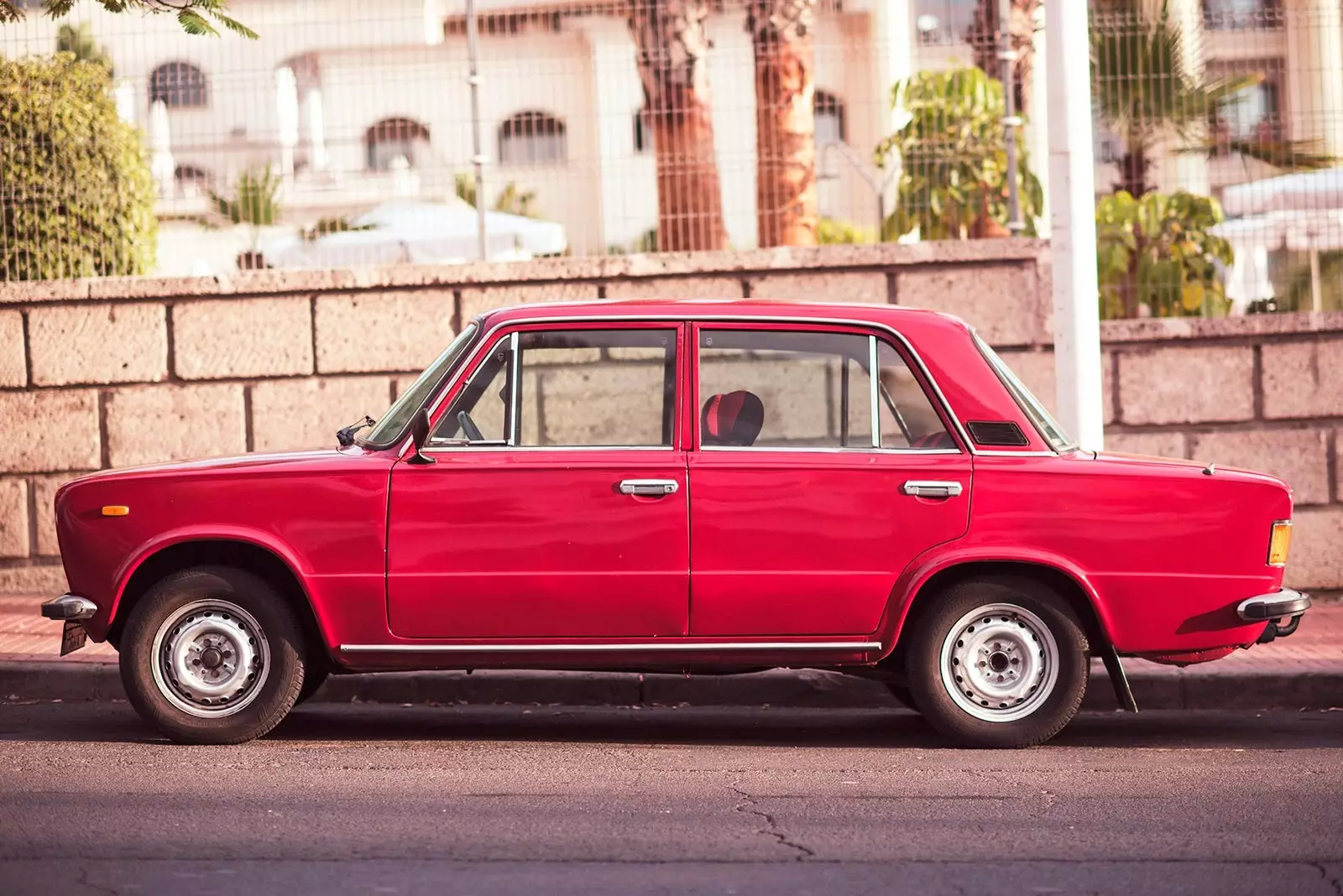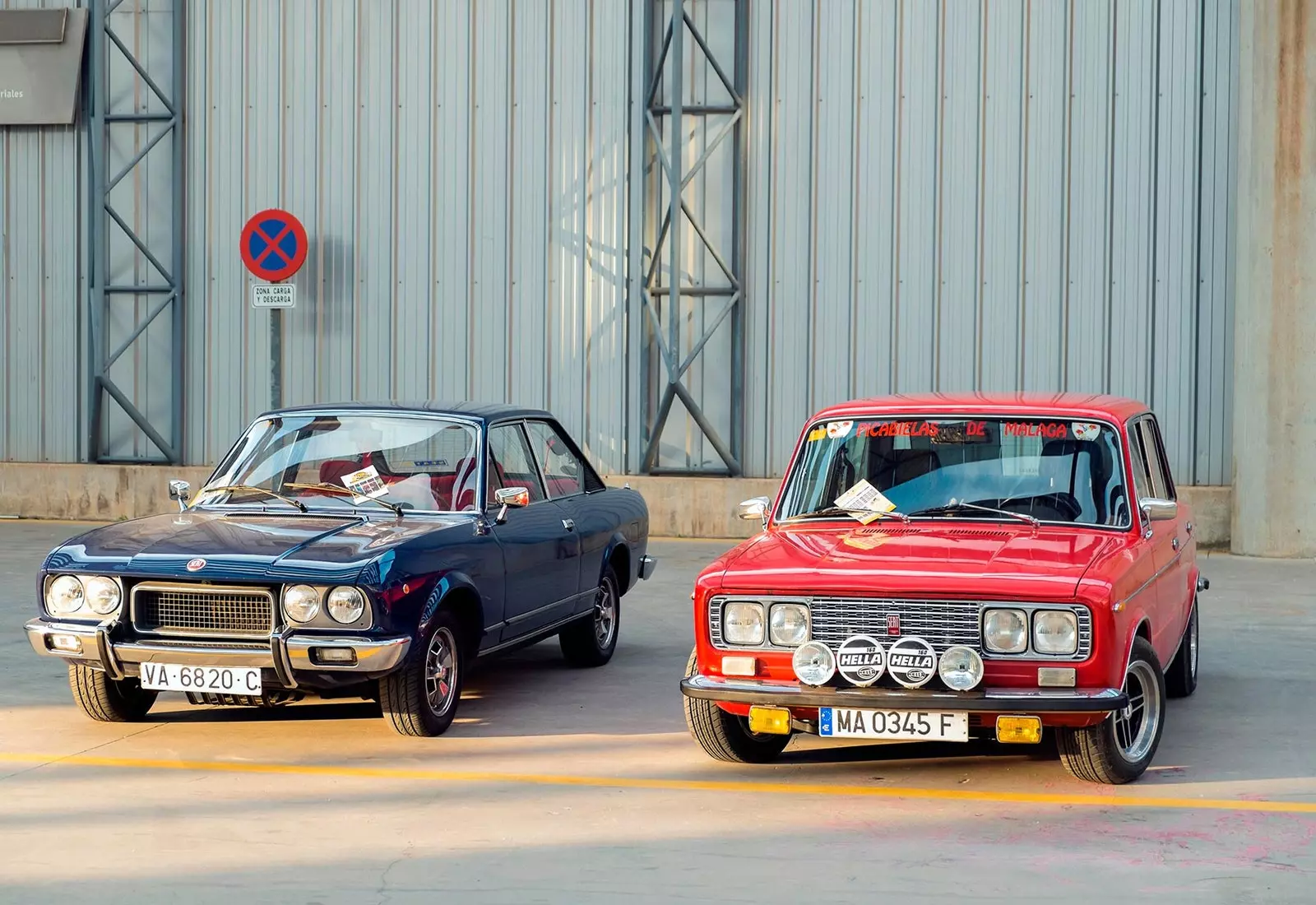
a legend
appeared on the market in 1968 What the Spanish replica to the Fiat 124, and in fact its manufacture was made under license from the Italian brand.
The Seat 124 was featured in the hall of Barcelona of that year with a peculiar installation that allowed the visitor to separate the car into different sections, through which its interior could be seen.
Shortly after I would see the light the top variant of the model, named 1430 in honor of its displacement, more powerful than that of the flat model. Together, the 124 and 1430 quickly became the symbol of a new middle class that began to prosper in the still gray ** Spain of the 70s.**
the bodywork of that five seater It was designed by Italian engineer Oscar Montabone , following the prevailing trapezoidal fashion in the transalpine country in those years and represented in its quintessence by the Alfa Romeo Giulia.
Rectilinear lines and very simple forms with a large glazed surface were used to prop up a body of four doors, three volumes and a simple front with two round headlights and small rear lights.
The 1430 version sported striking double square headlights at the front, while its rear lights increased in size over time and the successive homologation regulations.
In 1975 , while in Italy the Fiat 124 disappeared , in our country a deep renovation of the Seat 124 was presented, in charge of Giorgetto Giugiaro , to cover the parentheses generated between the Seat 127 and the Seat 131.
In the exterior design, the circular headlamps of the initial version were replaced by rectangular ones and some new drivers integrated They reinvented the rear. That year also marked the disappearance of version 1430 , being replaced by a new model officially called Seat 124 D.
The manufacture of the 124 took place in the factories of **Zona Franca in Barcelona ** and **Landaben in Pamplona **, and a total of 896,364 units until 1980, when production ceased.
As far as mechanics is concerned, the legendary vehicle had an initial engine of 1,200 cc. , which limited its benefits, although these were more than acceptable for the time.
Subsequently and gradually it was increasing its displacement , going by 1,600, 1,800 and 2,000cc. there were versions Saloon and Estate, which were the most popular and in which simplicity prevailed, but also versions Coupe and Sport , with much more sophisticated design lines.
Quickly, the Seat 124 It became a vehicle that represented a very turbulent time in Spain and, as such, had its reflection at the cinema.
He had a more leading role than many supporting actors in the so-called quinqui cinema of the mid 70s and early 80s, with directors like Eloy de la Iglesia or José Antonio de la Loma and titles like the hidden pleasures (1976), Stray dogs (1977) or Colleagues (1982).
Special presence has the 124 in I, The Heifer (1985), where different models appear in different sequences: in diesel version , What police car , What cab of Barcelona or flying through the air after a chase.
It also had its space in the art house cinema from the hand of Gonzalo Suarez in his vindicated film morbid (1972), starring Ana Belén and Víctor Manuel.
In this case, a striking red 124 Coupé It was the vehicle that dragged the caravan with which the leading couple went touring the different locations where the story took place.
Other of his most outstanding appearances on the big screen were The adultery game (1973), directed by Joaquin Luis Romero Marchent and starring Juan Luis Galiardo and Ágata Lys, as well as The reporter (1975), directed by michelangelo antonioni and with Jack Nicholson and María Schneider as main protagonists.
More recently we have been able to see the Seat 124 in Torrent, the foolish arm of the law (1998), acting as the crappy-vehicle in which the unpresentable protagonist police "patrolled" the city , with an El Fary dancing doll on the dashboard; and in The wolf (2004), directed by Michael Coutois , in which Alexander Noriega gave life to a secret service agent infiltrated in the terrorist group ETA in the 70's.
On television, the Seat 124 He has appeared in national series such as the ministry of time in its second season, where Pacino, a character played by Hugo Silva, stars a police chase behind the wheel of a copy to capture a group of criminals.

Seat 124 Sport Coupe and Seat 1430
Apart from fiction, our fifty-year-old protagonist can boast of having belonged to some of the Noted national celebrities of the time like the singer karina or the boxer Urtain. They both bought a Sport Coupe , as widely reported by the media.
When it was put up for sale 1968, the 124 it cost 144,432 pesetas (about 870 euros to change) and the most expensive model was, precisely, the Sport Coupe , which cost 243,000 pesetas (1,460 euros).
It was promoted at the time as "the car of common sense" for its medium-sized body, its large space and performance and handling that assimilated it to superior models.
The basic version of 60 horses reached 140 kilometers per hour and both the headrests and the left rear view mirror (the right one did not exist) represented a luxury for the time.
Finally, the so-called "common sense" ended up massively captivating the Spanish middle class and the Seat 124 forever became a contemporary classic that even today, half a century later, we still remember with nostalgia.
